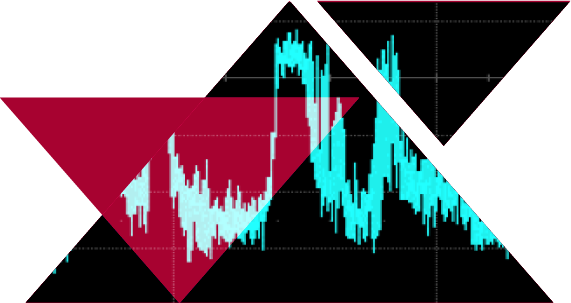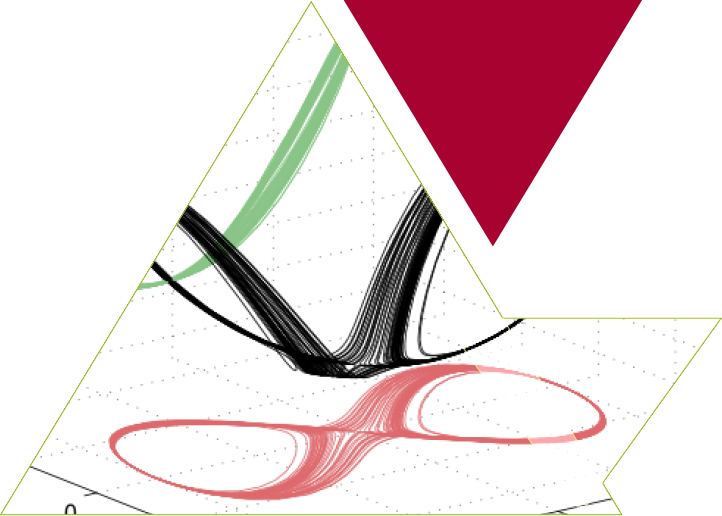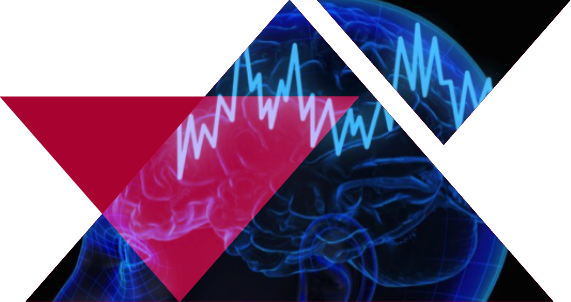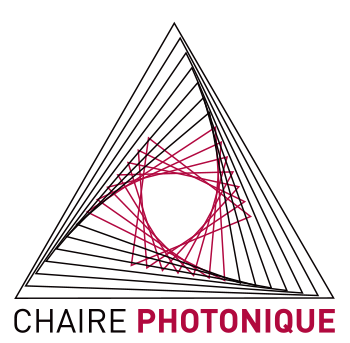Signal processing tomorrow will consider the richness of nonlinear dynamical systems.
We are preparing the new scientific and technological revolutions in information processing. These revolutions will use photonics as the physical system to handle information but also to develop new ways of computing that will explore the richness of nonlinear dynamics of photonic systems. The most commonly studied example to explore the complexity and nonlinear dynamics in photonics is the one of a diode laser. That component is also largely used in our fiber optic communication systems, CD players, sensing and imaging systems.
A semiconductor laser behaves dynamically as a damped nonlinear oscillator, i.e. modification of its driving parameters (temperature, current, optical pumping) possibly leads to a transient oscillatory dynamics towards a steady state (constant power). These oscillations called “relaxation oscillations” are explained as the result of a competition between the dynamics of photonics and the one of the carriers that when recombining create photons by stimulated emission.
Light emitted by a laser diode can become chaotic… chaos is the most complex dynamical state in a system.
When subject to an optical feedback (light emitted by the laser is partially reflected and re-injected in the laser cavity), an optical injection or a large current modulation, these damped relaxation oscillations can become undamped and the diode laser behaves as a self-sustained, autonomous oscillator with frequencies beyond several GHz. As a result of these additional degrees of freedom in the laser diode dynamics, higher bifurcations can lead to more complex dynamical states, including period doubling, quasiperiodicity and intermittency routes to optical chaos. In that case, the outpower power of the diode laser oscillates in time in an irregular and unpredictable way and this dynamical behavior directly translates the nonlinear physics of the coupling between photons and electronic carriers.

We exploit dynamical instability of light polarisation.

Our laser sources are edge-emitting semiconductor lasers but also vertical cavity semiconductor lasers (VCSEL), quantum dot (QDOT) or quantum cascade (QCL) lasers. Diode lasers of the type QDOT or QCL are particularly interesting since their physical parameters provide them with a greater dynamical stability. We have recently contributed to the first experimental observation of temporal chaos from a QCL, hence paving the way towards new applications of optical chaos in the mid infrared spectral range. Diode lasers of the type VCSEL show an instability of the emitted light polarisation that, when controlled, enables new applications of fast optical switching or vectorial chaos (light phase shows chaotic properties although the emitted laser power is stationary).
These laser nonlinear dynamics drive innovation… for example to understand and to mimic the behavior of biological systems or to generate random numbers.
Our goal is to study theoretically and experimentally the richness of nonlinear dynamics of a semiconductor laser, and to identify those dynamics that the best lead to new and innovative applications for signal processing.
For example we study how the nonlinear dynamics of a diode laser or more generally a photonic system can be exploited to develop functionalities of neuromorphic computing at high speed. In the framework of the European project PHRESCO we study a network of silicon microresonators to develop applications of shape recognition, dynamical prediction, data classification. Another is the application of nonlinear dynamics for the all optical generation of random bits at high speed.


Finally, these nonlinear dynamics show analogies with dynamics observed in other physical systems. For example, the statistical analysis of laser emission shows sequences of pulses of extreme intensity, i.e. significantly larger than the mean level of laser emission. These extreme events shows statistical properties close to those of rogue waves in hydrodynamics. We have observed for the first time extreme events in the emission of a laser with optical feedback and very recently vectorial extreme events in the polarisation dynamics of VCSEL.
LES FONDATEURS DE LA CHAIRE








